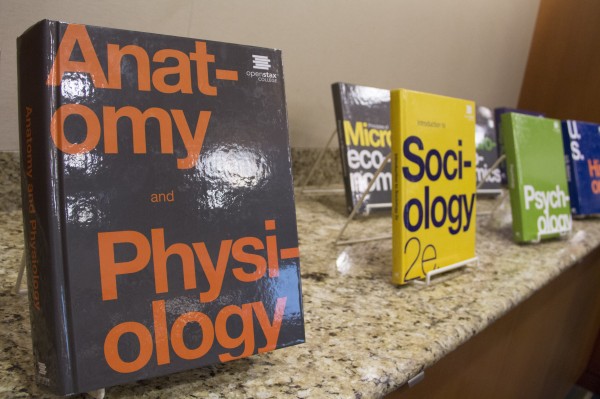
Open educational resources could be the future of college textbooks. Gray Bancroft | Washtenaw Voice
BY: Madi Tortora
Staff Writer
With the recent exponential rise in textbook prices combined with the already overwhelming cost of tuition, it seems as though it’s becoming more and more difficult to attend college on a budget.
It was estimated by the American Enterprise Institute that textbook prices have increased 812 percent over the past few decades. This skyrocket in prices is increasing faster than inflation, and is outpacing the 559 percent increase in tuition and fees over nearly the same period.
“As the cost of textbooks continues to rise, students are buying them less, which means that they don’t have the information they need,” said Claire Sparklin, a communications instructor at Washtenaw Community College. “We’ve made it so that in classes with high price textbooks, students at a financial disadvantage are also at a disadvantage in the classroom.”
According to a study performed by the United States Public Interest Research Group, the average American college student spends around $1,200 per year on books and supplies. This survey also concluded that 65 percent of students decided against buying a textbook because it was too expensive, and that 94 percent of those students who forwent purchasing said book were concerned that doing so would negatively affect their grades.
“From our basic research that we’ve done on this area, it has been suggested that there are students who don’t major in a certain subject because of the cost,” said Bonnie Tew, a WCC communications instructor. “Some students, as a result, can’t sign up for as many classes to stay on track with their program, because they can’t afford the textbook. It literally serves to close the door on opportunity.”
At WCC, an in-district, full-time student — participating in at least 12 credit hours — would pay approximately $1,128 per semester, at $94 per credit hour. Assuming that one year at WCC is two semesters long, the average total tuition fee would be $2,256, therefore making the average cost of textbooks more than 50 percent of the total tuition paid for one year.
“What I have been able to glean and see, unfortunately — and this is criminal — is that the community college students seem to be paying more money for the same textbook, some of which are being used in four-year institutions, and that’s a problem,” Tew said.
All numbers aside, the rise in textbook prices could be a potential deterrent to someone looking to receive an education while on a budget. Part of why community colleges were created is the significant lower yearly tuition rate than the average four-year school, which, for in-state students, is sitting at nearly $9,200 minus housing, food, books and supplies, according to an article by Bigfuture.
Sparklin and Tew, along with several other members of WCC faculty, are working on structuring a program, called Open-Education Resources, which offers free college textbooks online. These textbooks are readily available to their students.
“The faculty in the communications department became really disturbed by the continued increase in the price of our textbook, a textbook that was a nationally known, recognized, and probably the most popular one in education,” Tew said.
“It was getting to the point where this textbook price had been risen to $200 per book, and we tried working with the publisher and stripping out the nice paper, colored pictures, and hardcover, but one year later, the price was already soaring right up,” Tew continued.
OERs are just getting underway at campus, but could potentially change the way that students are learning and receiving information.
“I think OER is a wonderful way to empower students,” Sparklin said. “We know that OER usage keeps the cost of college lower for students, and it makes them more likely to engage in discussions and work.” This program could potentially be an opportunity to expand students access to education and provide an easy way to be successful in academics.
Sparklin, Tew, and other members of faculty interested in making OERs common in general education classes performed a survey on students who are using OERs and how it affects their learning. Although the survey was anonymous, the answers are explanatory of how OERs really can help students.
“The OER gave me peace of mind. I didn’t have to freak out trying to figure out how to pay for a book,” said one student. Many other students share the same opinion.
“It means having groceries for the month,” another student said. “When I’m not hungry, I can learn better.”
Because the rise of textbook prices can affect the amount of students that actually attend school, OERs could provide a new and improved way to support students financially both inside school, and out. OERs are obviously not the only solution to this problem, and may not fit every class offered, but they offer a sliver of hope in these trying times of piling student debt.
“I really see this as a new opportunity to support students, and their access to education, their access to academic success, and their access to current and future opportunities,” Tew said. “It’s an important tool in the process of education. Frankly, I think it would be possible to one day have a full track of general education courses that offered Open-Education Resources.”

